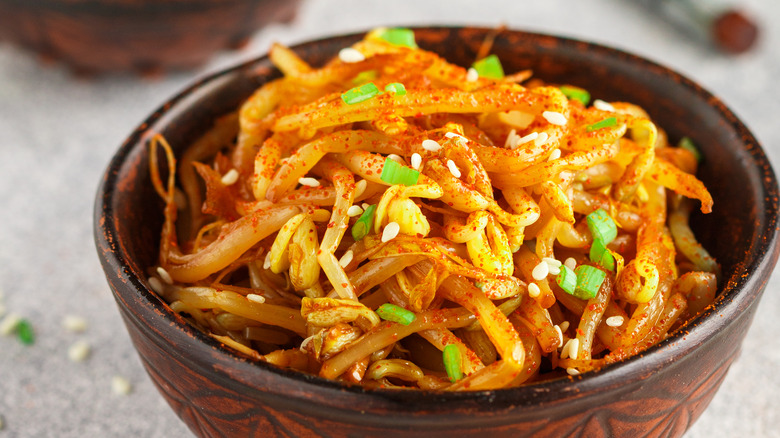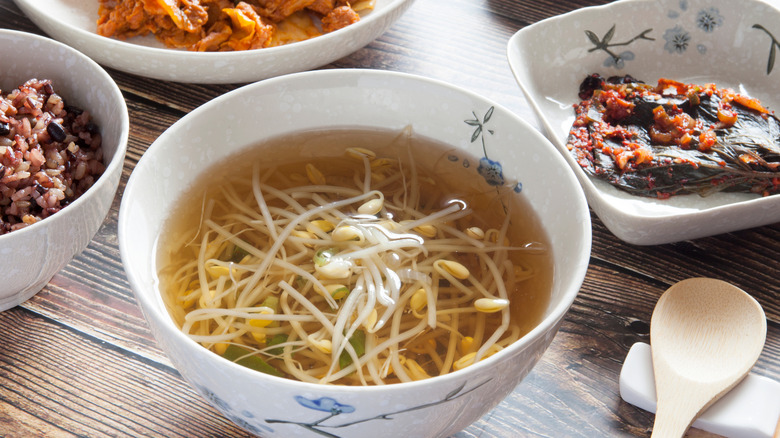Give Soybean Sprouts A Tasty Korean Twist With A Few Simple Ingredients
At a bustling Korean restaurant, various banchan — or small side dishes — arrive at your table. Among kimchi, radish, Korean potato salad, and seaweed salad, a seemingly humble dish of seasoned soybean sprouts catches your attention. One bite, and you're captivated. The soybean sprouts are tender yet crisp, perfectly seasoned, and surprisingly flavorful. This delectable dish is kongnamul muchim, a beloved banchan that gives soybean sprouts their moment of culinary glory.
While it's unknown how this dish originated, Koreans have enjoyed kongnamul dishes as early as the Goryeo era, also known as the Three Kingdoms Period. Often eaten on its own or paired with rice, you can also enjoy kongnamul in soups and stews.
At home, you can give your soybean sprouts a tasty Korean twist, inspired by kongnamul muchim, with just a few simple ingredients: sesame oil, soy sauce, Korean chile powder, rice wine vinegar, and aromatics like garlic and scallions. A dash of monosodium glutamate (MSG) will add a welcome pop of umami.
Kongnamul is easy to prepare at home
Begin by washing your soybean sprouts, then bring a pot of lightly salted water to a boil. Toss in the cleaned soybean sprouts, but only parboil for about 15 seconds to keep them crisp yet tender. Once done, immediately drain and immerse them in ice water, halting the cooking process and locking in that satisfying crunch.
Next comes the most exciting part — infuse the soybean sprouts with mouthwatering flavors using ingredients you probably already have in your pantry. Whisk together sesame oil or olive oil, soy sauce or fish sauce, gochugaru or Korean chile powder, sesame seeds, rice wine vinegar, minced garlic, and MSG in a large bowl. Each component adds flavor and depth. Once your seasoning mix is well-blended, stir in the drained soybean sprouts, ensuring they are evenly coated with the sauce. If you would like, you can garnish the dish with chopped green onions for an added layer of flavor and a burst of color.
Serve the kongnamul muchim immediately or refrigerate the dish first, allowing the soybean sprouts to soak in all the flavors like crispy, narrow sponges. To experiment further while still retaining the Korean flavors, you can swap out the soybeans with other veggies, like julienned zucchini or carrots.

